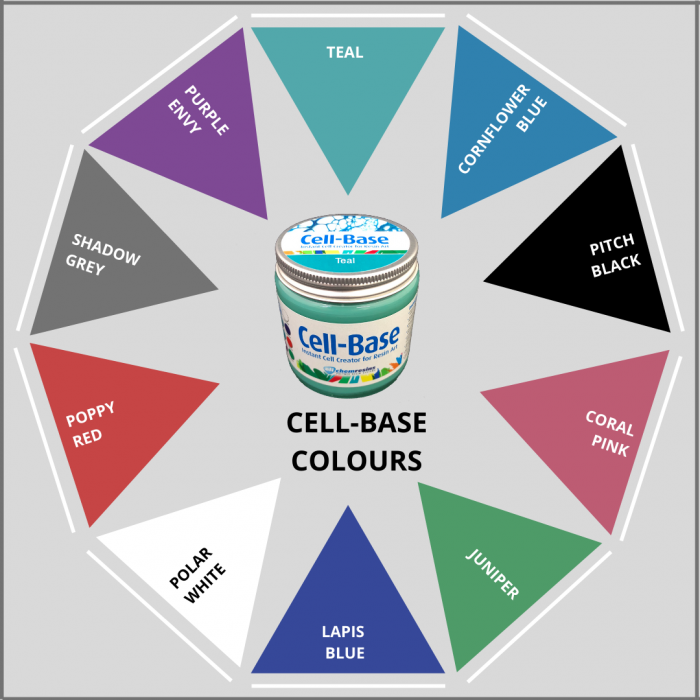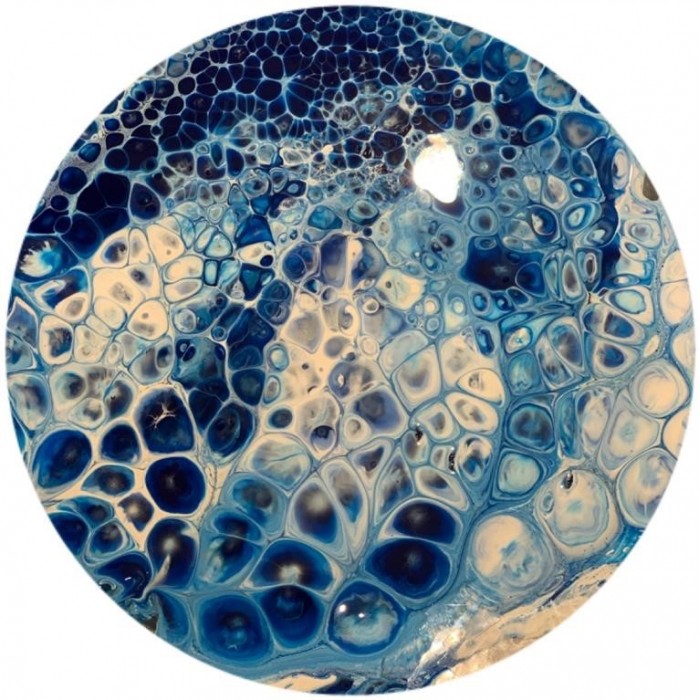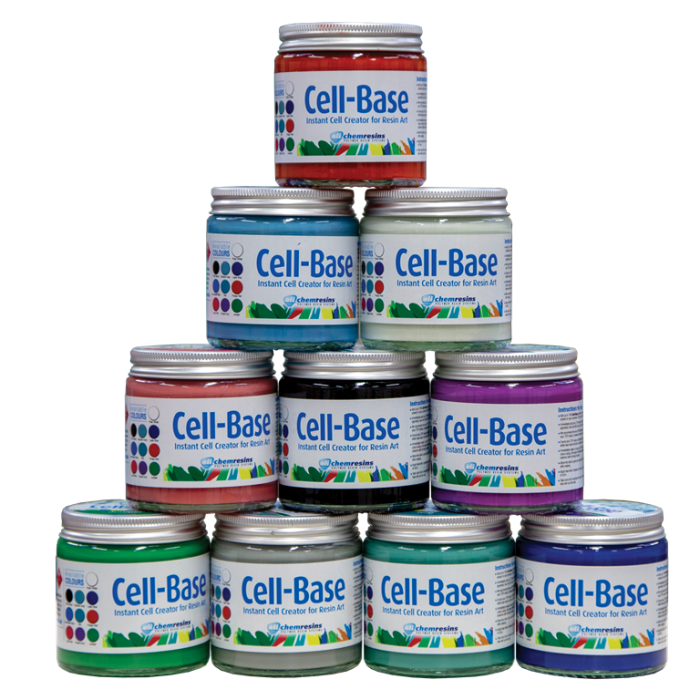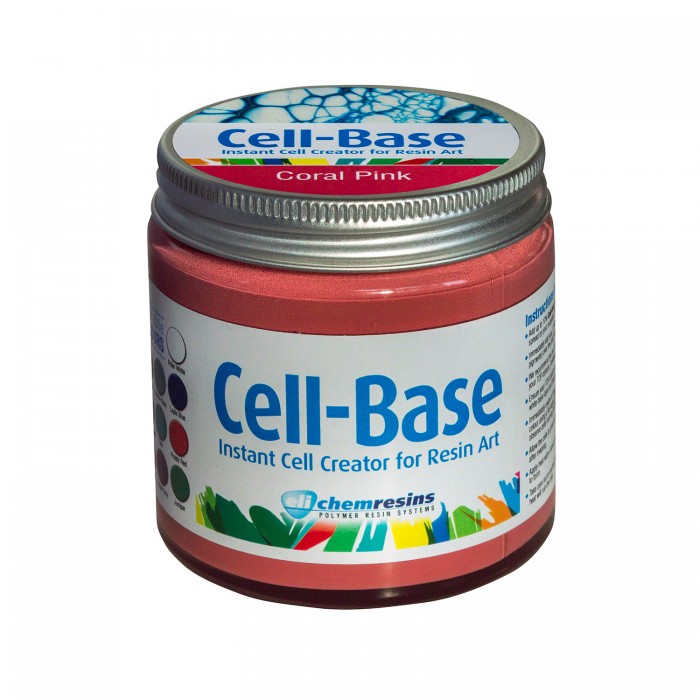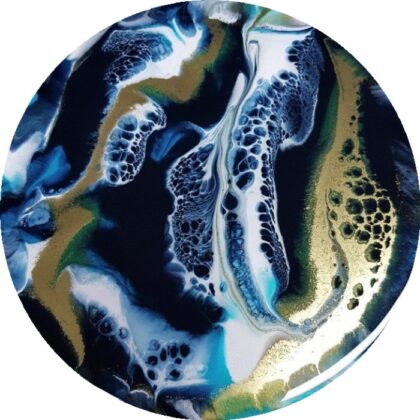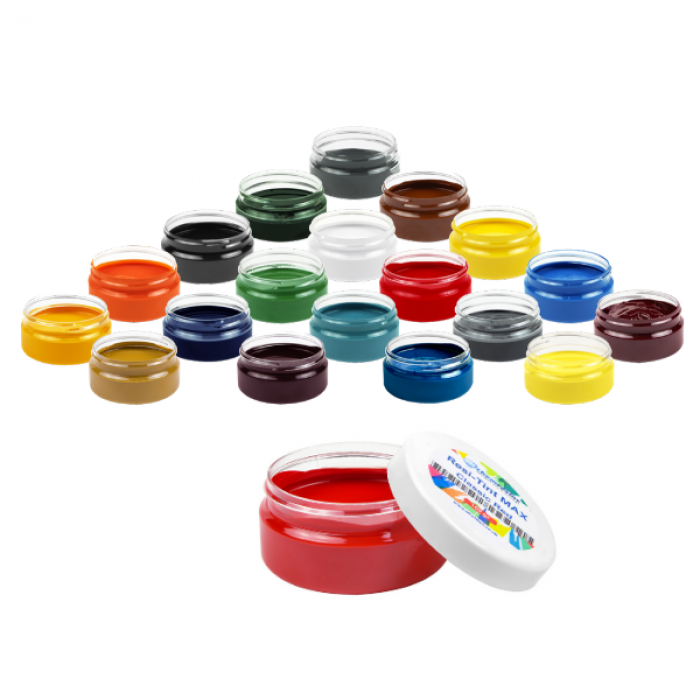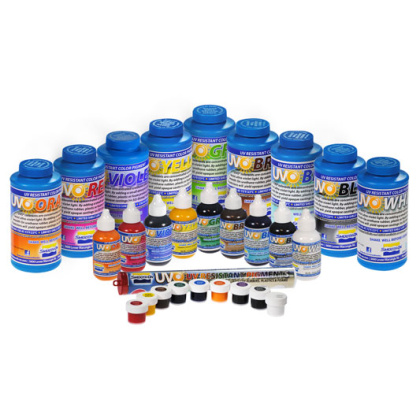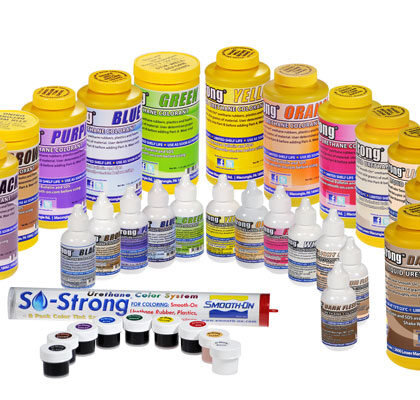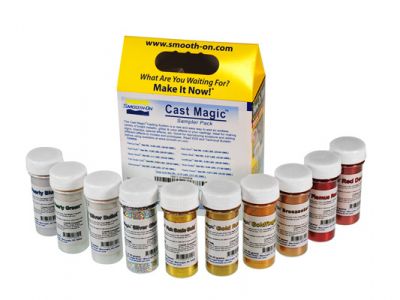Specifications |
|
| Surfaces | canvas, wood, MDF, glass, perspex, concrete & metal |
| Coverage | same as the coverage of the resin that Cell-Base will be added to |
| Pot Life | same as the pot life of the resin Cell-Base will be added to |
| Shelf life | one year in sealed containers |
Cell-Base is used just like a regular pigment which you mix into your resin, the only difference is that you use it as your base colour. For best results you need to work at a steady pace with no pauses between steps, once you pour your base layer the pigment starts losing reactivity so don’t wait too long before adding your top colours. As soon as your top colours are down it’s time to swipe! We found that a thin top layer and a light touch to the swipe works best, adding heat will help more cells to form.
You can also pour your regular colours over the base layer in a dirty pour technique, don’t mix too much in your resin as it is very concentrated and goes a long way.
- Cell-Base contains no silicone, no dimethicone and no alcohol
- No oily residue or dimples on the surface
- Cell-Base is your base colour and the other colours will be dragged or swiped across the base colour
- Simply drag your top colours around and watch the base pigment activate
- Applying heat with a heat gun or blowtorch will help more cells to form
- The cells will be random shapes and cluster together like a puzzle, quite different to the cells created with resi-BLAST
This product was developed in conjunction with MasterCast 1-2-1 clear artwork resin, however other brands of resins will also work but bear in mind that results may vary due to other brands having a different viscosity, density and curing schedule.
Paste pigments performed better in our testing compared to acrylic paints, inks or powder pigments. Metallic pigments did not perform well with Cell-Base. Cell-Base can be used as a regular pigment and in a “dirty pour“. Just remember to swipe or torch lightly to help the cells emerge.


